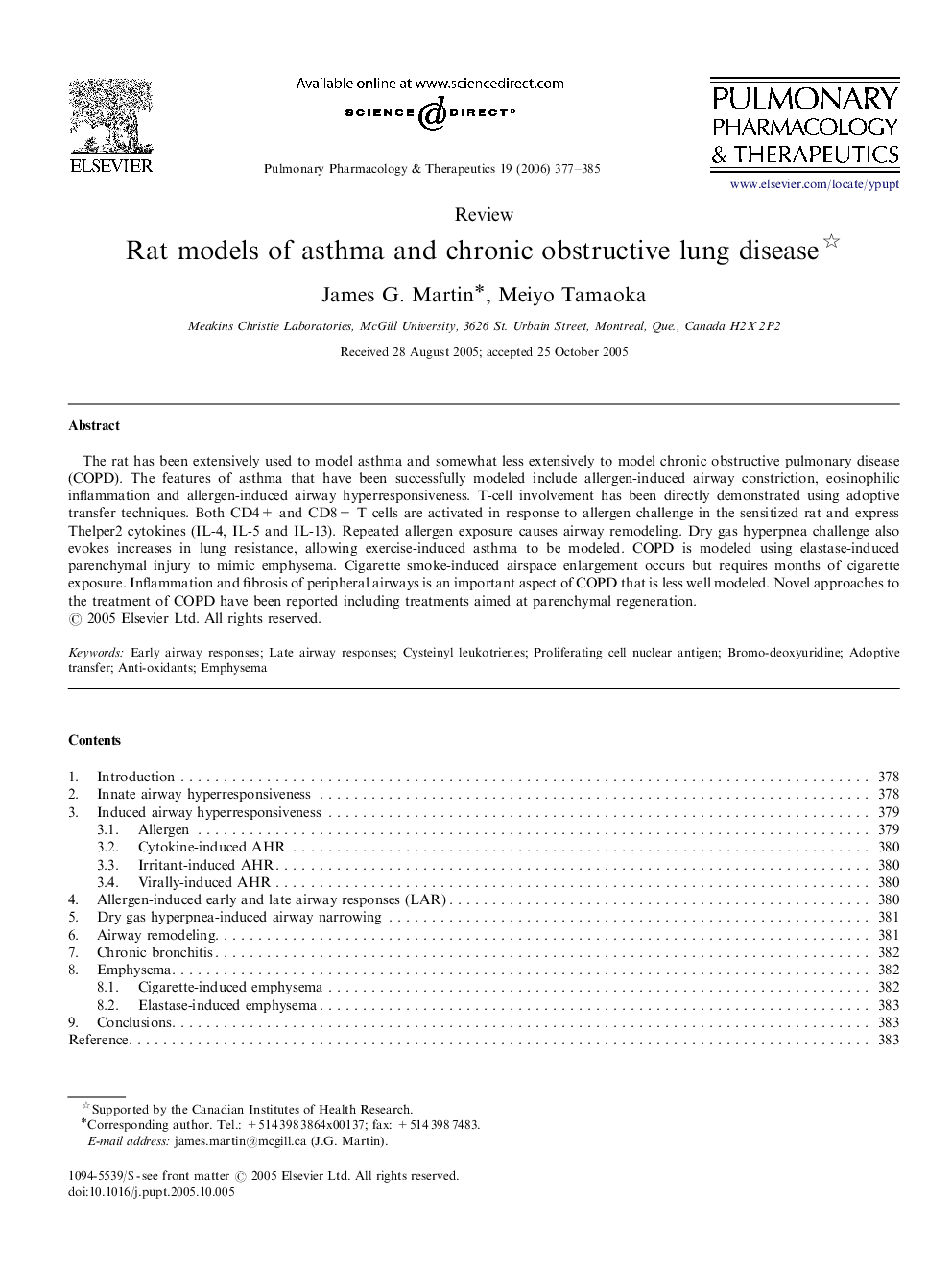| Article ID | Journal | Published Year | Pages | File Type |
|---|---|---|---|---|
| 2567756 | Pulmonary Pharmacology & Therapeutics | 2006 | 9 Pages |
The rat has been extensively used to model asthma and somewhat less extensively to model chronic obstructive pulmonary disease (COPD). The features of asthma that have been successfully modeled include allergen-induced airway constriction, eosinophilic inflammation and allergen-induced airway hyperresponsiveness. T-cell involvement has been directly demonstrated using adoptive transfer techniques. Both CD4+ and CD8+ T cells are activated in response to allergen challenge in the sensitized rat and express Thelper2 cytokines (IL-4, IL-5 and IL-13). Repeated allergen exposure causes airway remodeling. Dry gas hyperpnea challenge also evokes increases in lung resistance, allowing exercise-induced asthma to be modeled. COPD is modeled using elastase-induced parenchymal injury to mimic emphysema. Cigarette smoke-induced airspace enlargement occurs but requires months of cigarette exposure. Inflammation and fibrosis of peripheral airways is an important aspect of COPD that is less well modeled. Novel approaches to the treatment of COPD have been reported including treatments aimed at parenchymal regeneration.
